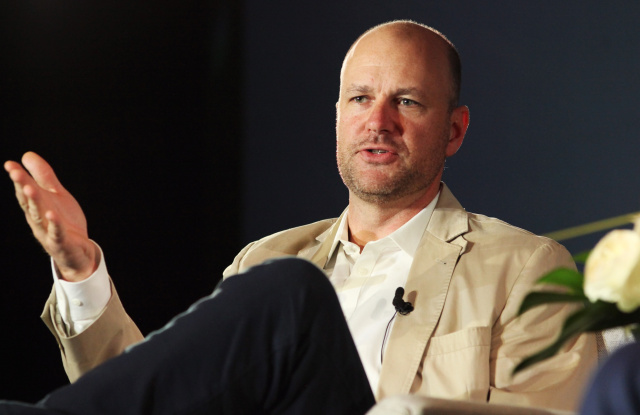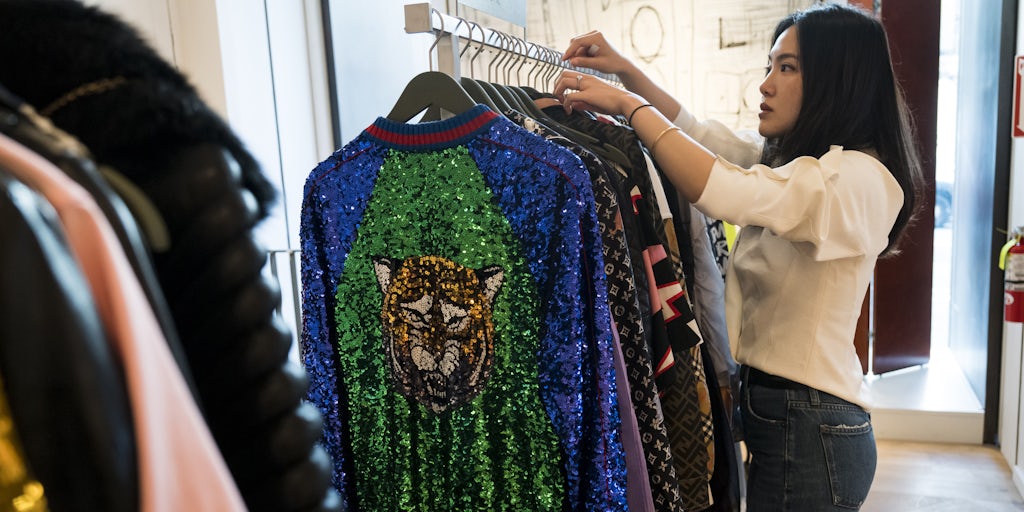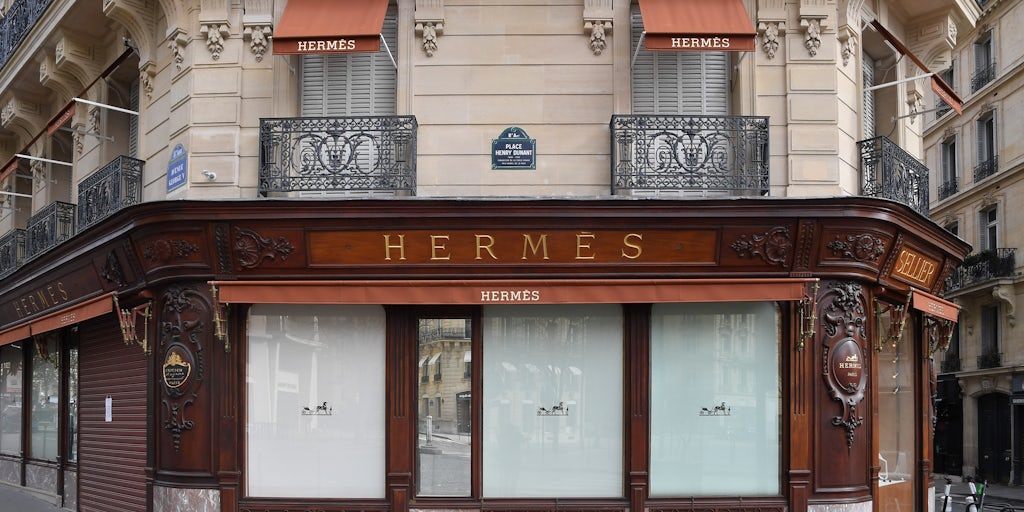Jamie Nordstrom on Navigating Nordstrom Through COVID-19 – WWD
Nordstrom Inc.’s business “leveled off” in mid-July as coronavirus cases spiked, and could reach a 50-50 split between store and digital sales by year-end.
When Nordstrom and Rack stores began reopening last spring, “Our anticipation was it would be a slow build, a gradual incremental improvement week-over-week. We did see that for awhile but probably by mid-July it leveled off, due to people seeing news about coronavirus cases spikes around the country,” Jamie Nordstrom, president of stores, Nordstrom Inc., said Wednesday. “Employees are just as nervous, if not more nervous, about coming into the stores.
“Our focus is on making [the stores] feel safe and feel good and comfortable, and a fun place to shop…This is going to be a long journey, but we feel we are on the right path,” Nordstrom said at the Footwear News virtual summit, themed “The Way Ahead.”
Nordstrom shut down its entire fleet in mid-March and began reopening stores in May. During the hiatus, “We spent a lot of time planning what stores would look and feel like and making sure our stores would be the safest place in town. By and large, we accomplished that.
“We are planning on living in this environment at least through the end of this year and probably through the spring,” Nordstrom predicted.
He said he’s concerned about the presidential election distracting people and creating more unrest, and unemployment figures.
“There’s just a lot of unknowns, a lot of uncertainties” with the pandemic. “Is this a one-year thing, a two-year thing, a five-year thing? To be prepared for any of those eventualities, that’s the hard thing. There is a lot of anxiety around the duration.”
Citing specific challenges running a retail business exacerbated by the global health crisis, he spoke of creating greater awareness on curbside pickup and returns, contactless payments “and lots of things we know how to do but have never been a daily part of what we are trying to emphasize.”
He said that through May, June and July “there wasn’t a lot of newness. With footwear, clothes and everything, it was a little hard to find.
“There seems to be this dearth of newness. We have been working with our merchandise teams to get ahead of that and have a good plan to get into fall. There is a lot of demand out there. People want something new, something that makes them feel good.”
The first big test will be with Nordstrom’s Anniversary Sale, running Aug. 19 to 30, and giving customers discounts on fresh goods for a limited time, and early access to Nordstrom card customers.
What do digital shoppers want? “First and foremost it’s about speed,” Nordstrom said. “There is a high expectation.”
Back a few years, delivery in seven days was acceptable, he noted. Nowadays, “if you can’t deliver next day on most products, you are kind of not in the game.”
Nordstrom has been rolling out next-day delivery in its top markets, including Los Angeles and New York. “The vast majority of what you can buy on nordstrom.com, you can get delivered the next day,” with options including picking up packages at Nordstrom, Rack, or Nordstrom Local locations.
He singled out Rack as having a “pretty strong and consistent” performance through the pandemic. Traffic to Rack stores has been above average for us. “We are encouraged by that business and see even more opportunities for growth over time.
“For the customer that is shopping Rack, it is a treasure hunt — you don’t go into Rack with a list of things you want to buy.”
Rack.com is in the “billion-dollar size range,” Nordstrom said, though he noted that the profitability of the business is constrained by the typically lower price points offered and smaller margins experienced operating digital fulfillment.
Nordstrom Inc.’s digital commerce last year represented about 35 percent of the total business. “We see it rapidly growing to more of a 50-50 business maybe by the end of this year,” said Nordstrom. The percentage would shift significantly due to loss of traffic in the stores this year from COVID-19.
“We are focused on digital appointments. Our sales people are doing a lot more virtual appointments, on a phone call or Zoom,” showing new merchandise to clients and offering styling advise.
However, he underscored the relevance of brick-and-mortar. “Once we get past this mode we are in and people feel comfortable, the role for a great store is going to be as important as ever,” Nordstrom said.
“Shoppers want stores that have compelling assortments, great service, great food and beverage — experiences where you bump into something that you didn’t expect to find.”
He said at the full-line fleet, bars have been added and that at the 57th Street Manhattan women’s flagship, “We’ve got a bar in the middle of the shoe department. It’s been incredibly successful.”
He referred to a philosophy at Starbucks about the human need for “a third place to go. You have your home, your office, and you need a third place.” He sees that as a store.
Providing compelling products and great experiences is “a thick recipe” that could even include making the alterations process more fun, he said
“We have to do a better job of connecting with customers outside the store and not just wait for them to walk in.” Pre-COVID-19, “the vast majority of our business was done just on relying traffic of people coming into the store. The world looks very different now and is probably going to be that way for awhile, some retailers do a much better job than us at digital outreach. We know how to do it, but focusing on doing it on scale, we thought we were good at, but we weren’t.
“Some of our direct competitors, Saks, Neiman’s. Net-a-porter, a lot of boutiques, there is a wide range of different retailers that do it really well, better than us and we are jealous of them. It’s our job not to complain but to get after that, I don’t think our team has ever been more motivated at getting at that digital experience. We have a long way to go on that but we are going to get better at it really fast.”
Another challenge is managing the supply chain and systems differently taking it from a wide range of categories, to focusing more on the few hot ones, such as bringing the supply of pumps, special occasion and wear-to-work footwear styles down and broadening active, ath-leisure and sneaker areas. “The word we use more than any other is ‘flexibility.’ Maybe agility is a close second. When it comes to our inventory, we want to be able to react to what’s selling and to make sure we have flow of new stuff. For now, it’s about an appropriate love of conservatism, being flexible and focusing on what’s best for customers.”
Nordstrom projected an accelerated shakeout of weak malls, though of the 100 or so malls where Nordstrom full-line stores operate, “most are pretty darn good and are probably going to do fine.” He singled out the independently owned shopping centers NorthPark, Bellevue Square, South Coast Plaza and Bal Harbour Shops for their superior merchandising.
“We are in the best places that have some long-term viability. There might be a few changes to the lineup but right now we feel pretty good about where we are.” Nordstrom said last month it would close 16 stores this year, leaving 100. The company had centralized its merchant team and cut many jobs.
Urban retail hubs will make a comeback after the pandemic subsides, Nordstrom suggested. “A lot of times people have bet against New York and have been proven wrong,” Nordstrom said, referencing 9/11 and the 2008 recession. “New York is the largest retail market in North America, and bigger than Paris and London combined,” he said, referring to some recent studies. “It’s going to come back better than ever and you will see that in other urban areas. There will be a lot more demand with the return to work, to school, and to going out with friends. People will need cool clothes for that. When we come out of this, we have an opportunity to have the best year we’ve ever had as a company. When that future arrives, we’ll see…”
Because of social distancing and working from home, Nordstrom said he misses his Monday lunches at the store with his cousins Erik and Pete Nordstrom, respectively, chief executive officer and chief merchant, and other family members, but they’re often on Zoom. People assume they were power lunches covering business. “We mostly talk about sports, fishing and college football. We don’t talk about shoes that much on those luncheons,” said Jamie, half-jokingly.
He also misses calling out and awarding employees for jobs well done. “There is so much goodness that comes from that. We can’t do that right now. It is something I am nervous about. Do we start to lose some of that glue that holds us together, that we built over the years? But we are looking at how to reward great e-performances.”
He has been visiting Nordstrom stores in the area, to see how the teams are faring through the health crisis and hear about their challenges. “It’s mostly to keep their chin up and focus on the long term. This is a people business, its easy to get mired in math, on the data and trying to manage to a number. We’ve got to keep remembering that people matter, relationships matter, and culture matters.”





